#Kirin ga kuru
Explore tagged Tumblr posts
Text
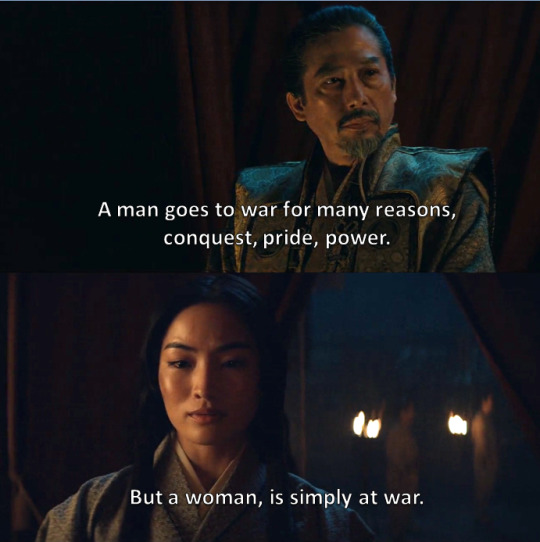

Shogun (2024) / Awaiting Kirin (2020)
There will always be war between good and evil. The evil will forever want to dominate, abuse and exploit others. The good will always want to fight back, demand justice and protect their families.
Akechi Mitsuhide (the man that inspires the character of Mariko's father) used to believe Oda Nobunaga to be the one to unify the warring states and usher an era of peace but Oda got greedy.
Akechi began to plot against Oda after he ordered the killings of monks, peasants, women and children on Mount Hiei, to send a message to his enemies of the consequences of their defiance.
At the time, Akechi was in contact with Tokugawa Ieyasu (Toranaga). When Akechi knew that Tokugawa would be the one to unify Japan, Akechi risk his own life to remove Oda to clear the path for him.
Tokugawa laid low when Akechi overthrew Oda. When Hideyoshi (Taiko) returns to avenge Oda, he kills everyone except Tokugawa who was "neutral" when in fact he was bidding his time to take over.
Which is why in the show, Shogun, Toranaga is close to Mariko (Akechi's daughter) and is growing impatient as he wants to remove the remnants of the Taiko and Oda as quickly as possible.
Lady Ochiba (Taiko's Consort) knows of Toranaga's true intentions, which is why she fully distrust and hate him, that she could not wait any longer and push Ishido and the Council to move quickly.
[You know, it would've been cool if they got Hiroki Hasegawa to play Akechi in Shogun! I've watched several actors playing Akechi, but Hiroki Hasegawa managed to nail the conflicted character nicely!)
#shogun#shogun fx#shogun 2024#anna sawai#hiroyuki sanada#awaiting kirin#kirin ga kuru#akechi mitsuhide#hiroki hasegawa#period drama#historical drama#taiga drama#japanese drama#samurai#sengoku jidai#oda nobunaga#toyotomi hideyoshi#tokugawa ieyasu#jidaigeki
25 notes
·
View notes
Text
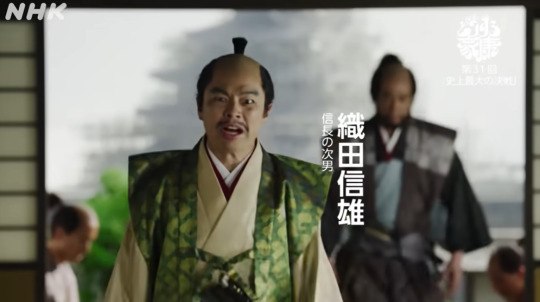

Back when the cast photos were released, I commented that I thought the costume department dressed up Nobukatsu in an outfit that is meant to be reminiscent of the classic Nobunaga painting in green, white, and red outfit.
I hadn't been entirely sure, then, because the lighting made the green "vest" look a little yellowish, but in the actual scenes it's more clearly visible that it's green.
I also mentioned that I think he looks very much like Sometani's Nobunaga from the Kirin ga Kuru drama.

Dousuru's Nobukatsu was wearing is some sort sleeveless attire that is tied in the middle, as opposed to a the standard kataginu depicted in the Nobunaga painting. In Kirin, Nobunaga most often wears a doubuku (Sengoku era haori), which has that exact same cloth ties, so I was wondering if it was done with the intention of emphasising the resemblance.
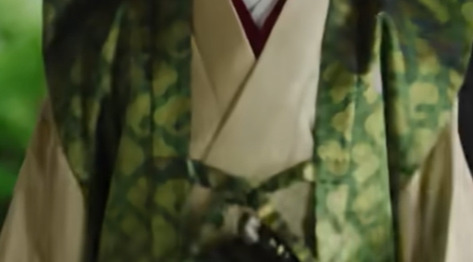

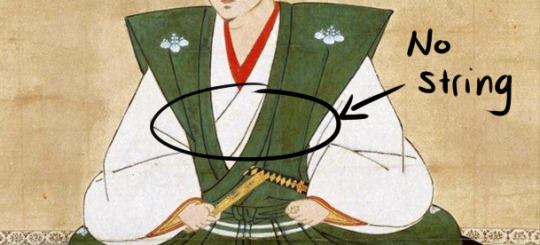
However, Ieyasu also wears this exact same stringed "vest" in Dousuru, so perhaps I was actually wrong.
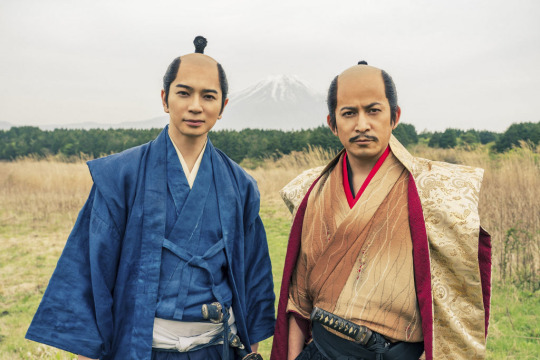
On the subject of attire, though.
That "vest" with the strings to tie it close, which is called chanchan or denchi, is actually not only quite anachronistic (dates to at least the late 1600s or 1700s Edo period), but very pedestrian. It's worn by street hawkers and peddlers, and it was said to have been "invented" because the sleeves of normal haori or doubuku would just get in the way of them working.
It's highly popularised as the costume of "Mitokoumon", when he's out in "commoner disguise", and also a classic special birthday gifts for senior citizens (for "special numbered" ages like 60, 70, 80, etc).
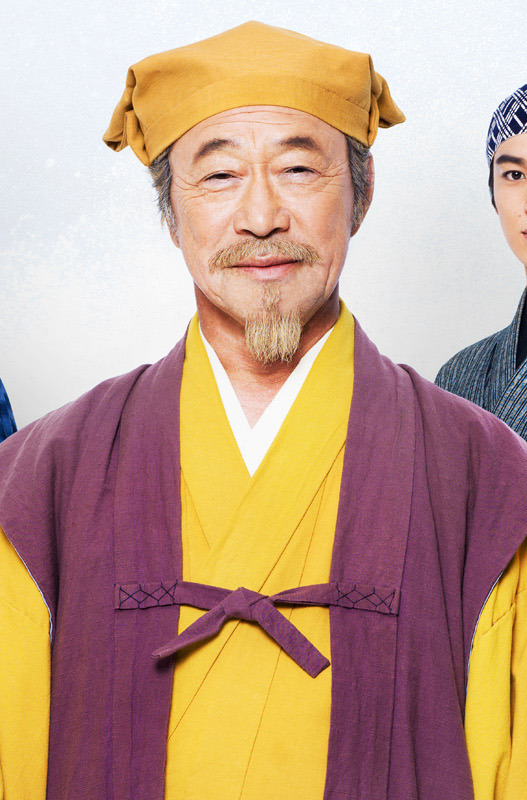

Taiga drama isn't necessarily the most historically accurate when it comes to costumes, but I am kind of curious if there's a special reason behind this or if it's just "it looks nice". NHK's website every now and then posts the concept art for the costumes and sometimes they would go into details for the reasoning behind specific designs.
#dousuru ieyasu#nhk drama#nhk taiga drama#nhk#taiga drama#dou suru ieyasu#oda nobukatsu#hamano kenta#clothing#costume
5 notes
·
View notes
Text

The Japanese are angry, saying, "Put more emphasis on historical facts, not on the world that white novelists fantasize about." What makes the Japanese even angrier is that the creators of the game had no interest in studying Japanese history, culture, etiquette, or etiquette. They have not even identified Akira Kurosawa's 'Kagemusha'! If they had checked the NHK-produced drama 'Kirin ga Kuru Awaiting Kirin' featuring Nobunaga, they would not have depicted such a silly, mistake-ridden audience scene.
0 notes
Note
Have you seen any of the NHK Taiga dramas? If you have, which one is your favorite?
I used to binge a bunch of them back when I was new to samurai things, but I haven't had chance to try them all ahaha. Back then I couldn't find where to stream most of them.
I... honestly don't have a favourite... yet. If you're looking for recommendations, I'm not the best person to ask.
Like, when it comes to those I know well about (Nobunaga, Hideyoshi, Ieyasu), one of the things I frequently pitch a fit about is "why won't they stop reusing bullshit clichés that aren't historically reliable". Reading historical Sengoku texts is more entertaining than watching dramas or reading manga for me at this point.
I still haven't tried titles like Tenchijin (about Naoe Kanetsugu) or Fuurin Kazan (about Yamamoto Kansuke), so maybe I would have less to whine about in there.
Artistic liberty is fine, but when you use the exact same trope 100+ times, and it's not even based on historical text, then it's just lazy writing. They're still doing this even with Kirin ga Kuru back in 2020 and it made me so mad.
And like, the scriptwriters and directors seem to frequently overrule their historian consultants' input about historical accuracy for the sake of tropes because I don't know what reason.
Hopefully they'll really try something new with Dousuru Ieyasu. I have high hopes when Yoshimoto is described as a sensible ruler that Ieyasu respects, and not just EVULULZ. This is a big departure from the typical Yoshimoto trope in so so so many Sengoku fiction. Might actually be interesting for once.
0 notes
Text
After disappointing Kamakura dono (bad and boring depiction of the Hojo Clan, I advise everyone to watch the Taiga Kusa Moeru which was Hojo centered, and also Yoshitsune and Taira no Kiyomori instead) Dousuru Ieyasu (I have finished episode 31 so far) has been one of the more bearable Taiga to me since Gunshi Kanbei and Kirin ga Kuru.
Battles are alright, like the cast, I also like that some lesser shown characters got screentime too (Otazu, Hayakawa, Gotoku, now Mori Nagayoshi). Also like that Oichi was characterized as more than just Nobunaga's sister.
Now the Toyotomi plotlines will begin (and they are keeping the cast for the final boss adult Chacha super secret, lol). Since Senhime and Hideyori are already cast we will see not only Sekigahara but also Osaka (hopefully better executed than in Sanadamaru).
Hikaru Kimi e centering on Murasaki Shikibu and the Fujiwara next year hopefully turns out amazing. So many characters that have never had a movie depiction so far, a female MC, and gives hope that more themes than Sengoku or Meiji/Bakumatsu are covered.
I would like them to revisit Taiheiki again (due to popularity of the manga Elusive Samurai) or the Onin War (the Taiga Hana no Ran and the manga Shinkuro Hashiru are good). Or some era like Nara or Asuka period (unlikely since the sets and costumes cost too much 😅).




Screenshots from "Dou Suru Ieyasu?"(What To Do Ieyasu?).
Part 2.
18 notes
·
View notes
Text
House of the Dragon’s “White Hart”: A History Lesson
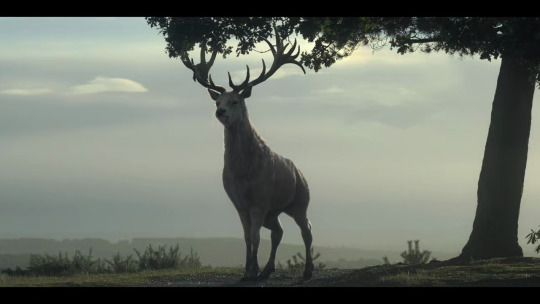
TL:DR: the usage of the White Hart is a blending of both European and Asian symbologies of monarchy. It’s very fun to unpack.
Quick note for everyone in here: Fire and Blood did not have this plot point. The White Hart only ever appeared in the first two books of ASOIAF as an alleged magical creature within Westeros. However, using the White Hart as a symbol is harkening back to hundreds of years of medieval warfare--especially considering the Ice and Fire franchise owes a lot to English medieval history.
First, for the English reference: the White Hart has notable royal heritage. To quote its Wikipedia page it was:
“... the personal badge of Richard II... In the Wilton Diptych (National Gallery, London), which is the earliest authentic contemporary portrait of an English king, Richard II wears a gold and enamelled white hart jewel, and even the angels surrounding the Virgin Mary all wear white hart badges.
Pretty straightforward, right? However, this gets additional layers when you take into account the personal history of King Richard II.
Richard II was a fore-runner in his time within the Plantagenet dynasty for culturally and politically asserting the idea of divine right--centuries even before James VI of Scotland wrote about it in his The True Law of Free Monarchies. There’s a reason William Shakespeare devoted the first play of his Major Tetralogy/Henriad to him, if only because the deposition of this king (however bad or inadequate he may be) poses massive questions regarding the justice or necessity of kingly rule altogether--if overmighty subjects can overthrow a king, what do we need a king for?
If overmighty subjects can overthrow a king, what do we need a king for? Is this not, indeed, the ultimate fate of House Targaryen? If one minor house such as the Hightowers can pervert and creep upon their authority--what does prevent other Houses from trying so? What prevents a Great House from subsequently asserting its claim--either of independence or the Iron Throne itself? The Storm Kings that descended into House Baratheon and the Stark Kings of Winter already gave us the answer in Game of Thrones.
But we go further. Let’s return to Richard II and the White Hart--and more importantly, how he turned into a tangible symbol of his political power--even at the expense of the unifying rule of the monarchy. See the Wilton Diptych:
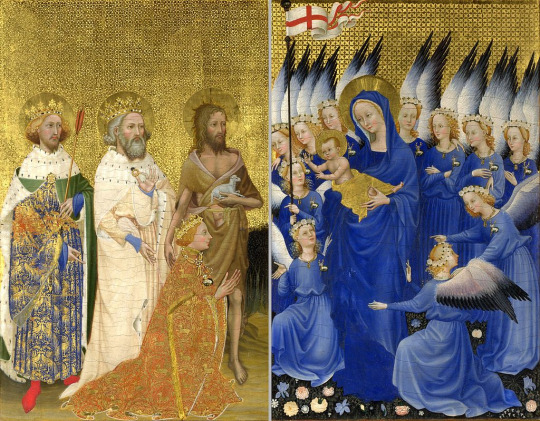
The angels here are shown wearing the badge of the White Hart. As it happens, the White Hart was also recorded to be the livery badge of an armed man serving Richard II directly. Livery badges became identifiers of loyalty to a lord or knightly household retaining a fighting man for their services--in contrast to the traditional “feudal ideal” of land, lord and serf.
This informs Shakespeare’s own creative turn of phrase in the play:
Not all the water in the rough rude sea
Can wash the balm off from an anointed king.
The breath of worldly men cannot depose
The deputy elected by the Lord.
For every man that Bolingbroke hath pressed
To lift shrewd steel against our golden crown,
God for His Richard hath in heavenly pay
A glorious angel. Then, if angels fight,
Weak men must fall, for heaven still guards the right.
--- Richard II, II.3.55-63.
Armed service and knightly duty, therefore, is now equated to financial pay, not traditional values. To once again quote from Wikipedia:
These were badges in various forms made for a leading figure bearing his personal device, and given to others who would demonstrate by wearing them that they were in some way his employees, retainers, allies or supporters. They were especially common in England in the age of "bastard feudalism" from the mid-fourteenth century until about the end of the fifteenth century, a period of intense factional conflict which saw the deposition of Richard II and the Wars of the Roses.
The Diptych is therefore an artistic representation of Richard II’s megalomaniacal assumption of royal authority: he is not only king by right of men, but also by God--to the point that angels themselves are under his personal pay--the very definition of bastard feudalism. This referred to the phenomenon of standing armies maintained not in service to the realm, but to the highest bidder--the very phenomenon that sustained and won House Lannister its hegemony (at great cost) during the War of the Five Kings. We are given a more plain yet apt description of it by Robert Baratheon himself:
Robert Baratheon : Which is the bigger number, five or one?
Cersei Lannister : Five.
Robert Baratheon : [holds up his left fingers] Five... [clutches his right fist] ... one. One army, a real army, united behind one leader with one purpose. Our purpose died with the Mad King. Now we've got as many armies as there are men with gold in their purse, and everybody wants something different...
There is some irony, perhaps, in that the very symbol used in the real-life perversion of unifying monarchy is the one used to highlight the purity and royal majesty of the pre-Conquest kingship(s) of Westeros. However, there’s another straightforward usage of the idea of the “symbolic beast showing itself to the rightful ruler of the realm”.
Enter the Japanese kirin / Chinese qilin ( 麒麟 ).

The kirin is more like a mystical hodgepodge creature, not unlike an East Asian dragon. However, it is a matter of traditional folklore that the kirin is supposedly only shown to a strong warrior or ruler who promises to eventually unite a torn realm.
This very plot point pops up in a number of Japanese popular fiction involving the notorious Warring States/Sengoku Period of Japan--from something as straightforward as the 2020 NHK Taiga Drama Awaiting Kirin (Kirin ga Kuru), which portrays the tragic dream of the Ashikaga Shogunate and Akechi Mitsuhide to return to samurai valor--much as it is faced by the growing ambition of the relative upstart Oda Nobunaga...
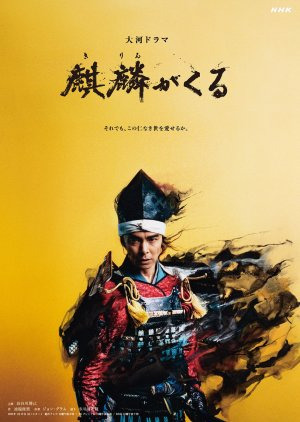
... and even as family-friendly a franchise as Pokemon Conquest (where you seek to capture Arceus, the God of the Pokemon universe and the most kirin-like of all of then to unite a pastiche nation of the Sengoku Period in the Pokemon Universe).
All of this, then, once again casts the wasted pursuit of Viserys I and Rhaenyra’s effortless encounter with the Westerosi White Hart in greater symbolic light.

Practically the whole realm supports--and perverts--the process of the hunt in order to hand and guarantee that Viserys I will capture and kill the White Hart as a symbolic good omen for his newfound male “heir” Aegon II. Yet all they have to show for it is killing a base (albeit still impressive) brown deer. Viserys can’t even kill it with own strength of body--failing, faltering, necrotic and overdrunk as he already is.
Rhaenyra, after having a night of adventure with Criston Cole and proving that they are both worthy people, not just by the titles they were granted (Princess of Dragonstone and Knight of the Kingsguard), but by their own skills, encounter the White Hart for themselves. They have just proven themselves as capable hunters (if not even better), yet they eventually decide the better of it and let this majestic beast go. They respect the omen and their connection with the Realm. Their encounter with this beast of omens shows to us, the viewers, that they are perhaps to symbolically and emotionally attach to.
And yet, all the same, we are reminded of the gut punch: this is not medieval England. This is not Sengoku Japan. This is not real life, history or current. This is Westeros--where the worthiest are not granted power save what they can scrounge for themselves. Where the best intentions and attempts at peacemaking (even that of the still-kindly but increasingly-caught in the middle Alicent) are not rewarded with gratitude. Where the crows will feast on corpses because the high lords play their game of thrones. This is the Westeros at the eve of the Dance of the Dragons--where armies bought by the gold and steel of great houses will fight and die and burn in the name of loyalty to two competing claimants--one of whom was once the Realm’s Delight. Yet this still-hopeful princess is forced to go up against a realm that Rhaenys Targaryen aptly said would “sooner put itself to the torch” than accept a woman’s rule.
This is not real life. But it is a mirror of the ugly histories of men, of feudalism and the world that took us centuries to move away from, and yet still seem to be enthralled by in our fantasies that we inadvertently bring them back to the real world.
#house of the dragon#the white hart#white hart#house targaryen#house hightower#rhaenyra targaryen#princess rhaenyra#king viserys targaryen#viserys i#viserys i targaryen#alicent hightower#milly alcock#emily carey#paddy considine#criston cole#fabien frankel#kirin#awaiting kirin#kirin ga kuru#akechi mitsuhide#richard ii#richard ii of england#william shakespeare#nhk taiga drama#rhaenys targaryen#eve best#game of thrones#a song of ice and fire#pokemon conquest#arceus
16 notes
·
View notes
Photo










I will defend you. And my father....Toshimasa...
Could you kill him?
kirin ga kuru [麒麟がくる] 2020 ep 11 / richard siken, detail of the hayfield
#kirin ga kuru#麒麟がくる#nhk taiga drama tag#eventually i'll make a dead samurais tag but like. later#im. hmmm. so its like he was already leaning in that direction. and with history we know how the yoshitatsu-dosan#conflict will play out. but within a framework of a dramatized narrative it's like: you cannot sidestep this one#because this time you brought them into this room and you were there where it happened#when it happened. you are here and you heard and he asked you how much money you wanted#akechi mitsuhide#saito yoshitatsu
7 notes
·
View notes
Photo




⚆_⚆
kirin ga kuru/麒麟がくる ep 04
#words spoken before inevitable disaster part like. 4#kirin ga kuru#麒麟がくる#the casting for yoshitatsu is a little funny bc iirc his historical counterpart died in his 30s but also hideaki ito is hot so it's fine
3 notes
·
View notes
Photo

38 notes
·
View notes
Text
"When Akechi Mitsuhide besieged Hatanao Hideharu's castle of Yakami on behalf of Oda Nobunaga in 1574, he promised to spare Hideharu's life if he surrendered. As earnest as his intentions, Mitsuhide gave his own mother to Hideharu as a hostage.
She was well treated, but when the surrender was agreed, Oda Nobunaga overruled Mitsuhide's wishes and had Hideharu crucified. Even though this was not of Mitsuhide's doing, Hideharu's Samurai took their revenge on their hapless hostage and executed his mother.
It is no wonder that eight years later, Mitsuhide became the destroyer of Oda Nobunaga."
Samurai Women by Stephen Turnbull, page 26

Hiroki Hasegawa as Akechi Mitsuhide in Awaiting Kirin (2020)
Oda just keeps giving Akechi reasons to murder him doesn't he?
I can see why Mariko in James Clavell's Shogun is cunning and steadfast in playing politics, she doesn't want to end up like her father who is too honorable. The more you read the history, the more you realize how everything makes sense.
#samurai women#stephen turnbull#akechi mitsuhide#hiroki hasegawa#oda nobunaga#awaiting kirin#kirin ga kuru#james clavell#shogun#toda mariko#period drama#historical drama#taiga drama#japanese drama#japan#sengoku jidai
10 notes
·
View notes
Text


Shotaro Mamiya as Akechi Hidemitsu
aka my baby
0 notes
Text
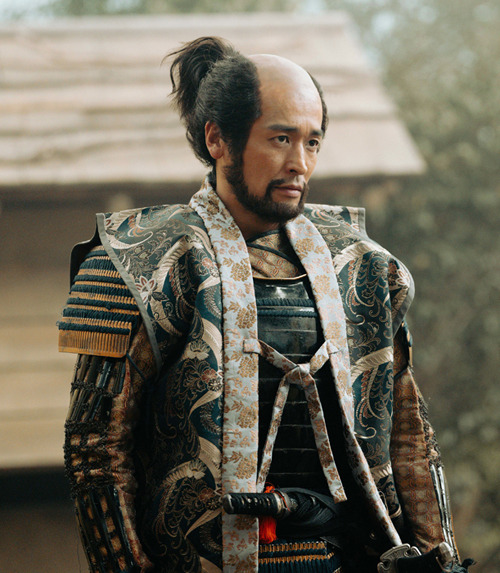
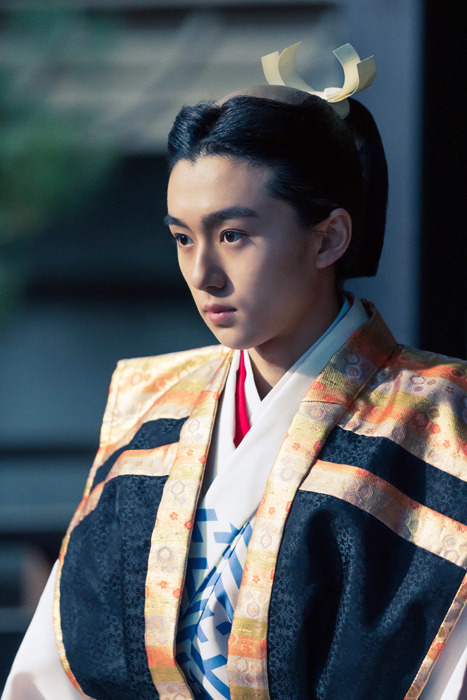
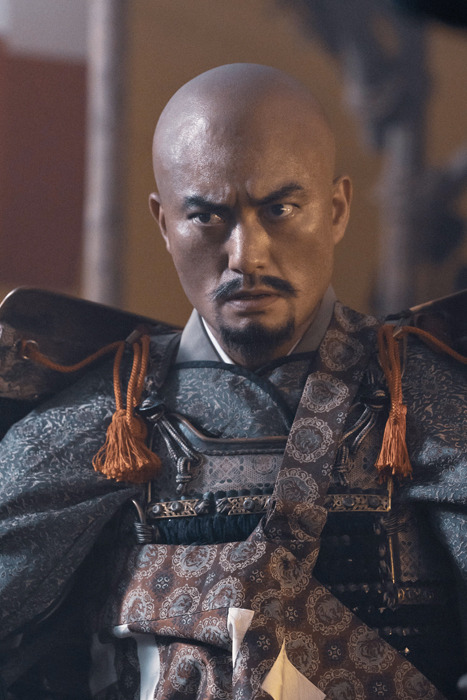

I happened to see in the news some new cast announced for Dousuru Ieyasu.
Satou Ryuuta as Hideyoshi's brother Hidenaga (top left), Oonishi Riku as Ran(maru) (top right), Tokushige Satoshi as Ikeda Tsuneoki (lower left), and Hamano Kenta as Nobunaga's son Nobukatsu (lower right)
To adhere with historical records, the article said Ranmaru will go by just "Mori Ran", and not "Ranmaru". Not only did the Shinchoukouki records this, but he apparently wrote his own letter signatures in that way. However, for the costuming, the style they went with is "old school". The curling hair tie and heavy kataginu is a typical look of the more kabuki-inspired look from black and white Shouwa era movies.
I'd thought it was curious that Ikeda was wearing that Buddhist monk's "drape" (kesa 袈裟), but it's actually how he was drawn in his portrait.
Nobukatsu's casting and styling is also interesting. His appearance is somewhat reminiscent of Sometani's Nobunaga from Kirin ga Kuru, and it looks almost like they made him wear an outfit that resembles the classic Kanou Soushuu Nobunaga portrait. Maybe it's meant to emphasise a sort of "Nobukatsu tries to follow his father's footsteps" plotline during Komaki-Nagakute. He was known to be using a Tenka Fubu-esque seal in that time period, after all (see this post).
#dousuru ieyasu#live action series#live action#nhk drama#nhk taiga drama#taiga drama#ikeda tsuneoki#hashiba hidenaga#toyotomi hidenaga#oda nobukatsu#mori ran#mori ran naritoshi#mori ranmaru
6 notes
·
View notes
Text










“With a look on Lake Biwa stands Saikyoji. It’s the family temple of Akechi family where was buried Akechi’s wife, Hiroko. The main gate of this temple, which Mitsuhide tried to revive after burning Mt. Hiei, was brought here from the dismantled Sakamoto Castle. It is recorded that Mitsuhide attended the funeral of his wife, Hiroko, which was held in this temple. It was a rare case that a warrior attended the funeral of his own wife. There is a legend that Hiroko, when living in poverty in Echizen, sold her black hair to support Mitsuhide. The merit of wife’s help was handed down in future, and was even left in verses of Matsuo Basho. When his beloved wife Hiroko died, Mitsuhide, without time to mourn for her, headed to the next battle for the sake of world’s peace.”
Poem by Matsuo Basho:
月さびよ明智が妻の咄せむ
A lonely night, let’s talk about Akechi’s wife
12 notes
·
View notes


